Saphenous Nerve
Overview
The saphenous nerve is a sensory nerve that presents deep within the leg. It’s part of the peripheral nervous system, which helps the brain interpret, or “feel,” stimuli from the body & the environment.
The function of the saphenous nerve
the saphenous nerve is a sensory nerve that carries information about what the leg is feeling from the body & the environment up to the spinal cord. It enables you to detect:
- Leg position.
- Pain.
- Temperature.
- Touch
- Where does it help me feel these things?
- You have one saphenous nerve in each leg. the saphenous nerve provides sensation to (innervates) the inner
- lower leg, including the:
- Inside of the ankle.
- Inner calf.
- Inside the arch of the foot.
- Lower knee.
How does the saphenous nerve provide to well-being?
Healthcare providers may use the saphenous nerve to deliver pain medications (nerve block).
- A saphenous nerve block might be necessary to:
- Halt or reduce pain in an emergency.
- Numb the lower leg for a procedure.
- Treat lingering pain.
ANATOMY
Origin & course
- The saphenous nerve (L3, L4) rises in the adjacent aspect of the anterior thigh from the posterior division of the femoral nerve. It then descends along with the femoral triangle & goes laterally to the femoral artery. The saphenous nerve then enters the adductor canal, also called Hunter’s canal, where it composite the femoral artery anteriorly to lie medial to the femoral artery.
- Upon leaving the adductor canal, the nerve then descends behind the sartorius muscle & penetrates the fascia lata between the tendons of the sartorius & gracilis muscles & becomes subcutaneous, to innervate the skin over the anterior aspect of the patella.
- The saphenous nerve recommences to go down the medial (tibial) aspect of the leg, running adjoining the greater saphenous vein. The nerve is interconnected with the medial branch of the superficial branch of the common fibular nerve. Both of these nerves then provide sensation to the anterior surface of the leg.
Branches of the saphenous nerve
The saphenous nerve gives off some branches at different levels of the lower limb:
- In the middle aspect of the thigh, the nerve gives off a branch to the subsartorial plexus.
- Upon leaving the adductor canal at the level of the medial femoral condyle of the femur, the nerve gives off its largest branch, the infrapatellar nerve. This nerve contributes to the peripatellar plexus & supplies the anteroinferior & medial aspects of the knee.
- At the lower third of the leg, the nerve gives off the medial crural cutaneous branches that supply sensation to the anterior & medial surfaces of the leg. These nerves transmit with the cutaneous branches of the obturator & femoral nerve.
Conditions and disorders related to the saphenous nerve
- The saphenous nerves located deep within the leg protect it, making injuries uncommon.
- Conditions that can lead to saphenous nerve pain include:
- Entrapment (pinched nerve), occurs when there’s abnormal pressure on a nerve.
- Trauma, including deep cuts on the leg.
- It’s possible to suffer from saphenous nerve damage due to complications of certain surgeries. These include:
- ACL (anterior cruciate ligament) tear reconstruction repairs damage to the ligament holding the knee in place.
- Ankle surgery treats conditions such as broken bones, severe arthritis & nagging tendonitis.
- Cardiac catheterization diagnoses and treats heart issues by inserting tiny instruments through an incision in the groin.
- Coronary artery bypass graft (CABG) surgery transfers a section of the leg artery to the heart to restore blood flow.
- Knee arthroscopy assesses & treats knee issues using a thin instrument with a camera at the tip.
- Meniscus repair treats torn cartilage in the knee.
- Varicose vein stripping removes unsightly veins that aren’t functioning properly.
Saphenous nerve entrapment neuropathy
The adductor canal is a space that presents deep to the sartorius muscle, from the apex of the femoral triangle to the adductor hiatus. The saphenous nerve passes through the adductor (Hunter’s) canal along with the femoral artery & vein. The nerve can become entrapped, leading to the following symptoms:
- Deep thigh ache
- Knee pain
- Loss of sensation over the medial aspect of the leg
- Dull, achy pain.
- Burning sensation.
- Muscle tightness.
- Shooting pain.
- Tingling and numbness.
- the healthcare provider might then refer the patient to a specialist or order a test of the saphenous nerve, called electromyography (EMG).
What is the Saphenous vein cutdown?
A saphenous vein cutdown is a procedure used to achieve access to the patient’s venous system. A possible complication of saphenous vein cutdown is damage to the saphenous nerve. Symptoms will comprise loss of sensation over the medial surface of the leg.
in some areas, the saphenous nerve runs parallel with the saphenous vein. Part of this vein can be surgically transferred to the heart to reimpose blood flow in people who have coronary artery disease. This procedure is known as coronary artery bypass graft surgery.
What is the use of saphenous nerve block?
A saphenous nerve block is used as a supplement to sciatic nerve block during various surgical procedures on the lower limb. Indications for blocking the nerve comprise trauma to the anteromedial aspect of the knee or leg, as far down as the medial malleolus pain after a partial or partly meniscectomy of the knee manipulation of an ankle fracture, in coincidence with blockage of another nerve which supplies sensation to the ankle region.
- The saphenous nerve block is used:
- For wound repair or investigation of the ankle or lower leg
- As part of an ankle, a block needs to operate a fractured or dislocated ankle
- For incision and drainage of an abscess in the ankle or lower leg
- For foreign body elimination in the ankle or lower leg
- To control or relieve pain after surgical repair of the meniscus
Treatment for the saphenous nerve pain
A saphenous nerve block can be used to briefly stop saphenous nerve pain during surgery, but, another treatment for more chronic nerve pain comprises:
- Nonsteroidal anti-inflammatory pain medications (NSAIDs) such as
- ibuprofen (Advil, Motrin),
- naproxen (Aleve), or
- acetaminophen (Tylenol)
- Physical therapy
- Leg braces
- Medications that modify nerve pain such as
- gabapentin (Neurontin) and
- pregabalin (Lyrica)
- Opioid pain medications
- (not recommended for long-term use)
- Lidocaine patches
- Capsaicin cream
- Biofeedback
- Acupuncture
- Transcutaneous electrical nerve stimulation (TENS)
Physiotherapy treatment for saphenous nerve pain
Nerve gliding
joint manipulation
soft tissue techniques
taping techniques
rehabilitative exercises
Risks & complications of a saphenous nerve block
- Infection: Any procedure that includes injecting medications into the skin has the possible chance to cause infection. This can occur if the injection site is not properly cleaned before to the procedure.
- Nerve injury: If the anesthetic medication is injected into the nerve itself, it might result in temporary or permanent damage to the nerve. The patient might have numbness, tingling, & pain, at the site of the injection if this occurs.
- Allergic reaction: Most anesthetic blocks are safe & rarely cause allergic reactions. If you have a known allergy to injectable anesthetic medications such as lidocaine or bupivacaine, discuss this with the doctor prior to receiving a saphenous nerve block.
- Bleeding: Because a saphenous nerve block is performed with injectable medication, bleeding under the skin (bruise or hematoma) might occur.
FAQ
What is the function of the saphenous nerve?
The saphenous nerve gives sensory supply to the medial aspect of the lower leg & the medial foot as far as the first metatarsal phalangeal joint. The nerve can be affected by injuries or methods to the femoral artery like catheterization within the subsartorial canal.
How does a saphenous nerve get damaged?
The reasons for saphenous nerve entrapment can occur through trauma such as a rotational injury or from compression for example a dashboard injury. The saphenous nerve can also be indirectly affected through lumbar disc disease, meniscal tear, or post-surgery. Most commonly take place during a total knee replacement.
How long does a saphenous nerve block last?
Pain relief is probably to last between 6 to 18 hours, depending on the mixture of local anesthetics used. As with any anesthesia procedure, there are risks & benefits associated with the saphenous nerve block.
How long does it proceed for the saphenous nerve to heal?
If the nerve is bruised or traumatized but is not cut, it should recover or get better over 6-12 weeks. A nerve that is cut will grow at 1mm per day, after about a 4-week period of ‘rest’ following the injury. Some people observed continued improvement over many months.
What are the uses of saphenous nerve block?
For wound repair or investigation of the ankle or lower leg
As part of an ankle, a block needs to operate a fractured or dislocated ankle
For incision and drainage of an abscess in the ankle or lower leg
For foreign body elimination in the ankle or lower leg
To control or relieve pain after surgical repair of the meniscus
Where does the saphenous nerve innervate?
The saphenous nerve is commonly known to contribute to the sensory supply of the lower extremity. The medical & anatomic literature describes the saphenous nerve as giving a sensory supply to the medial leg & calf, terminating distally at the “ball” of the great toe

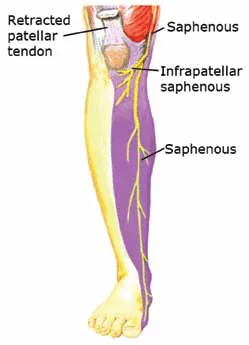

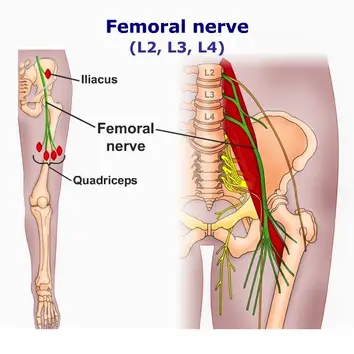
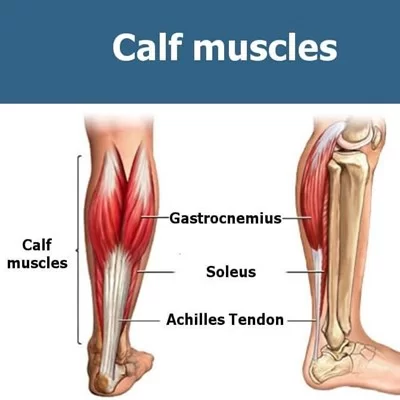
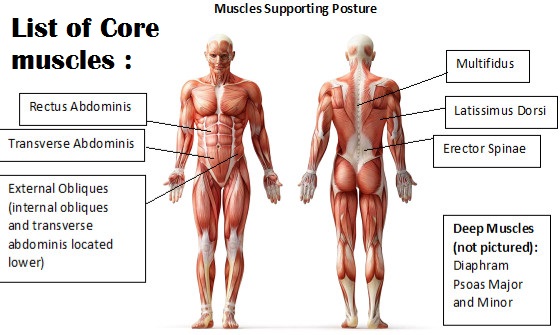
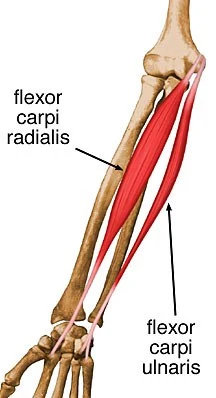
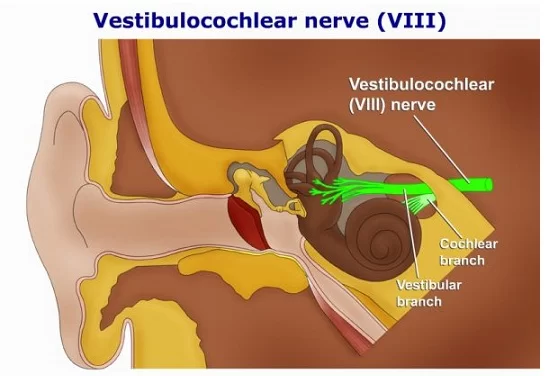
One Comment